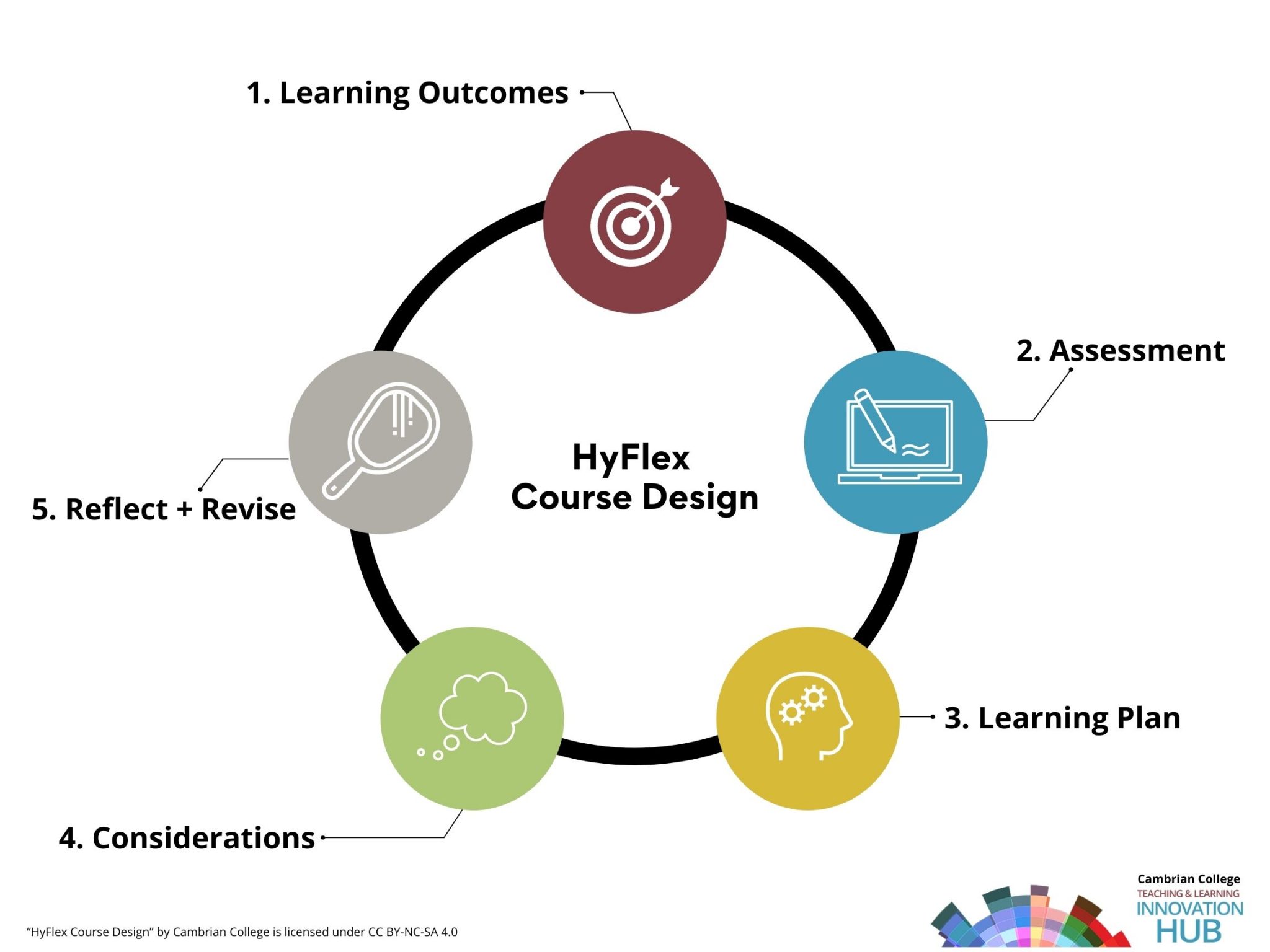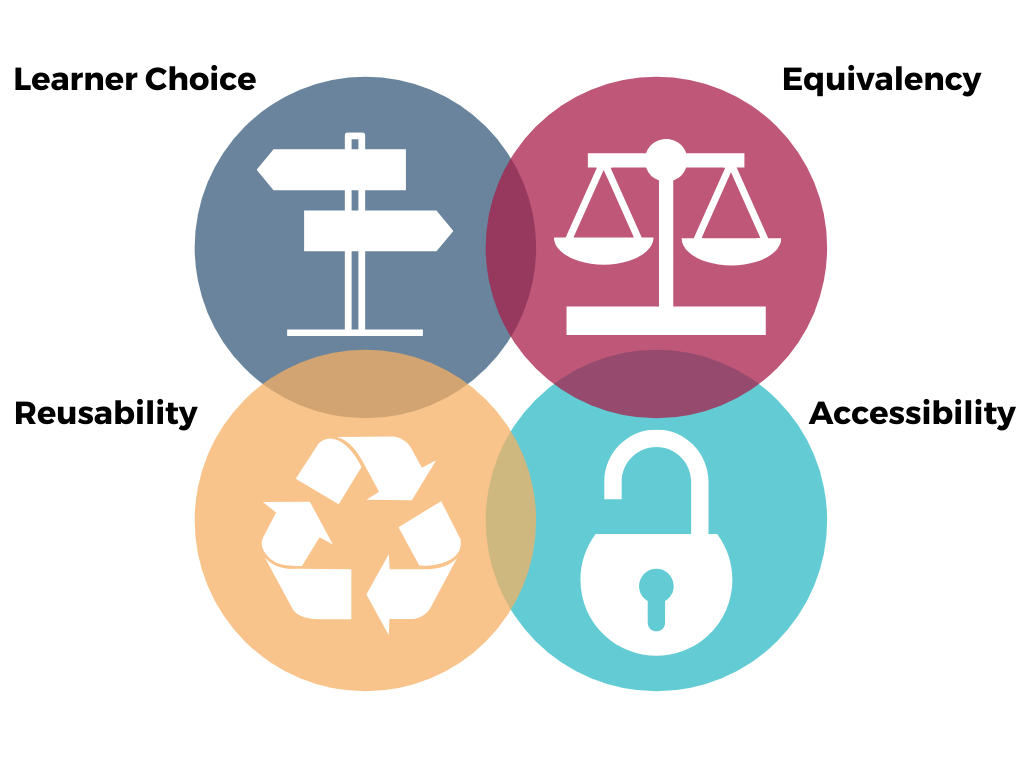Resources > Online Teaching & Learning > HyFlex > HyFlex Course Design
Designing HyFlex courses
As outlined by Brian Beatty, there are important aspects to consider when designing a HyFlex course. While not all-inclusive, the following steps will help guide instructors through the design process, as well as highlight various challenges of HyFlex course design:
- Assess the opportunities and challenges.
- Analyze and confirm or modify expected student learning outcomes.
- Prepare to assess learning outcomes.
- Evaluate the return on expectations.
Consider all pieces to the HyFlex puzzle

When designing a HyFlex course, try this process:
- Learning Outcomes: Identify what the learner should know and/or be able to do by the end of the course.
- Assessment: Identify assessments that evaluate whether the learner met the outcome(s).
- Learning Plan: Identify the topics/units and instructional materials to be included in each. Identify learning activities to engage students in the content.
- Considerations: Consider how instructional materials, learning activities, and assessments will be experienced by learners in each delivery mode.
- Reflect + Revise: At the end of the semester, reflect on what worked and what didn’t work; revise as needed.
Adopt Brian Beatty's Four Fundamental Values for HyFlex

Brian Beatty outlines four fundamental values that an instructor should consider when designing a HyFlex course.
- Learner Choice: Learners choose between participation modes daily, weekly, or topically. It is vital that students understand how HyFlex courses are set up, expectations in HyFlex environments, and the fluidity in moving between the different delivery modes at any given point in the semester.
- Equivalency: Activities in all participation modes lead to equivalent learning outcomes. Students in any delivery mode should experience the same quality of instructional materials, learning activities, and assessments. They don’t need to be the same; they need to be of equivalent quality depending on the delivery mode.
- Reusability: Reuse artifacts from learning activities in each participation mode for all students. Where possible, design instructional materials and learning activities that can be used across all modes of delivery.
- Accessibility: Provide equitable access to all participation modes (Beatty, 2019). It is important to note here that all instructional materials, learning activities, and resources should be accessible.
Guides
- Sample HyFlex Course Delivery: Practical Guide | Download the Guide
- The Online Course Map Guide| Download the Course Map
- HyFlex Learning Community Course Quality Rubric (HLCCQR) | Download the Rubric
Additional Resources
- Beatty, Brian J., Beatty and Beatty, B. J. (1970). Creating an Effective Learning Environment for All Students. In Designing a hybrid-flexible course, Designing a Hybrid-Flexible Course. Available at: https://edtechbooks.org/hyflex/hyflex_design (Accessed: 13 March 2024).
- 7 Things You Should Know About the HyFlex Course Model (Educause)
- Barclay, A. et al. (2022) Unit 1: What is HYFLEX?, HyFlex Course Design and Teaching Strategies. Available at: https://ecampusontario.pressbooks.pub/hyflexcoursedesignandteachingstrategies/chapter/unit-1-what-is-hyflex/.

